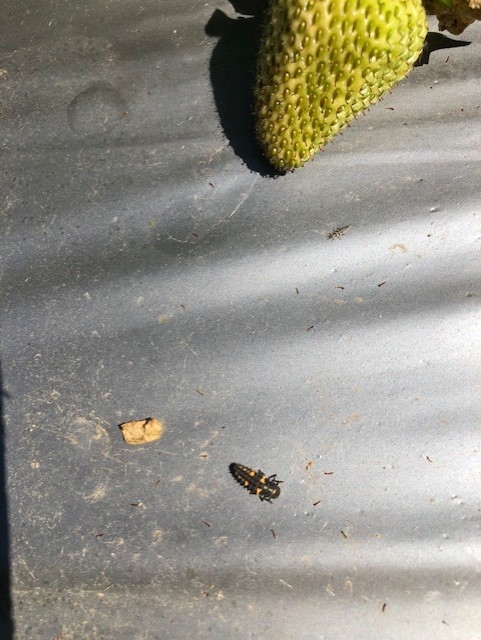Hello There My Little Friend
Just picking one of my strawberry trials this morning (yes, yes, I pick by myself, usually the nearest person is like a quarter of a mile away - it's pretty therapeutic actually) and I happened across this little guy wandering about on top of the bed plastic.
If you don't know, this is a ladybug larva, more specifically of the convergent ladybird beetle, Hippodamia convergens. According to the University of Cornell biological control website these mainly feed on aphids,but absent these (as is the case in strawberries, aphids are not that common) they'll feed on small insect larvae, insect eggs, mites (yes!) and at times plant nectar.
Nice to see you there my little friend.

Larva of the convergent ladybird beetle.
Comments:
2.
Right you are Eric. Hard to tell for sure, but I think the other one might be a lacewing larva. Had I picked that up to begin with I could have investigated closer.
Probably not a surprise to you, but this grower uses a lot of soft chemistry for pest management and yes, cover crops in the winter.


Nice observation! It looks like there are two larvae in the photo. One closer to the fruit and much smaller. We often see lots of lady beetles and other beneficial insects in cover crops. These beneficial insects then move to our strawberry and vegetable fields.
take care and stay well, Eric
Posted by Eric Brennan on May 6, 2020 at 9:59 AM